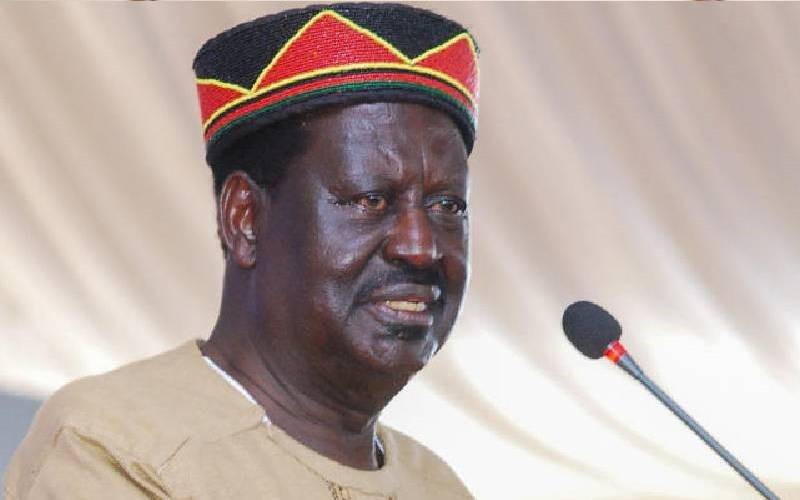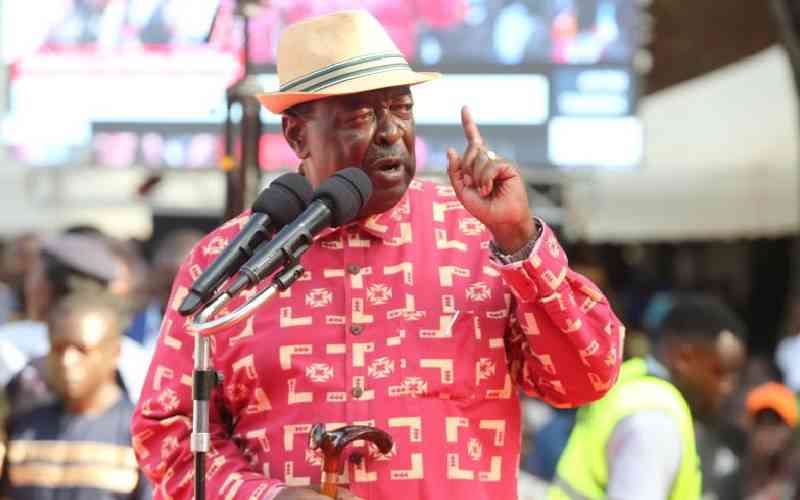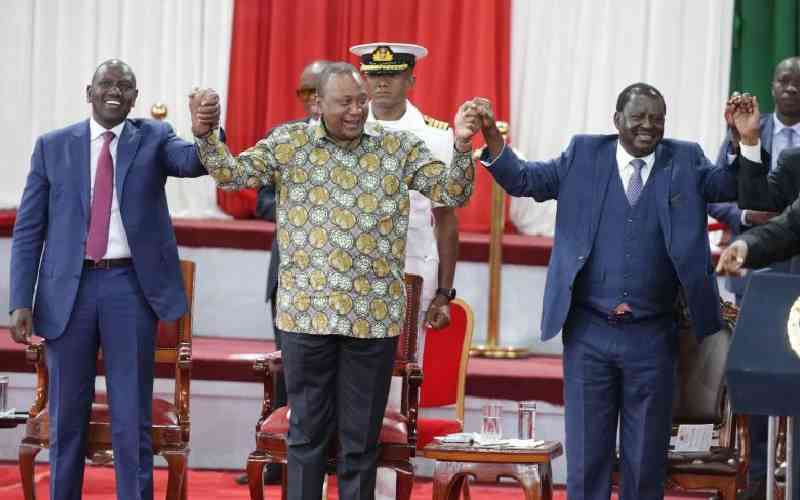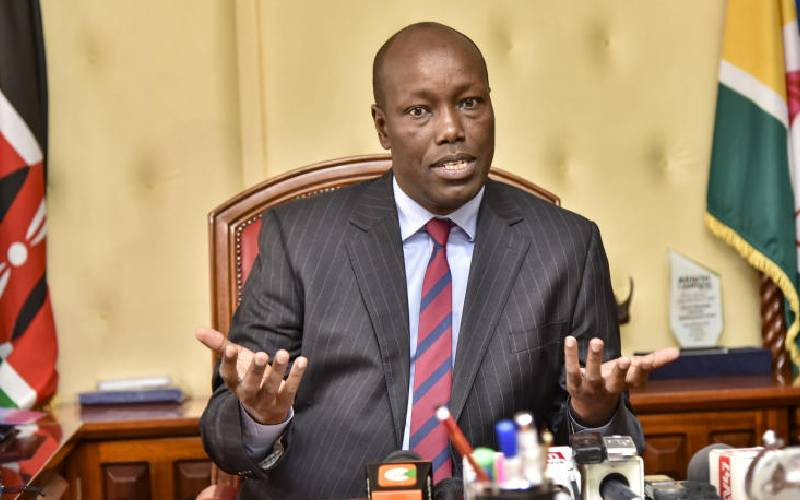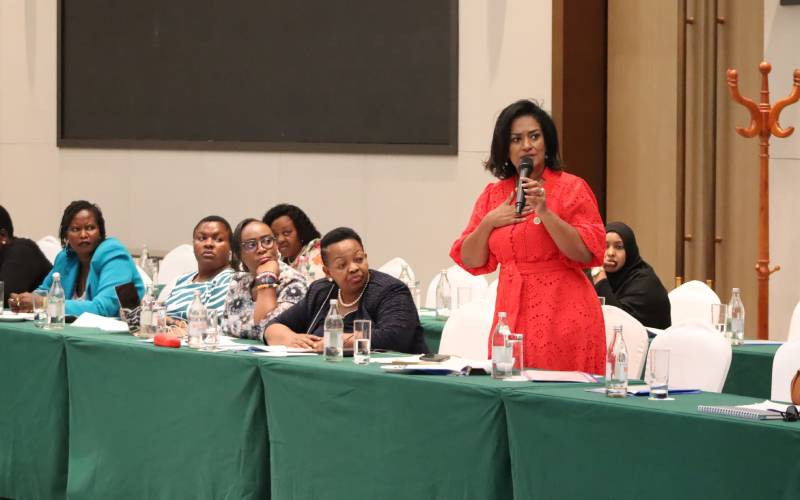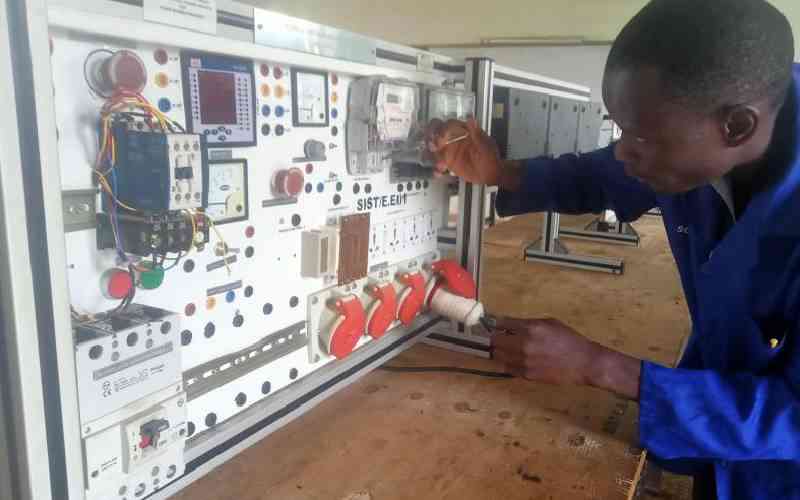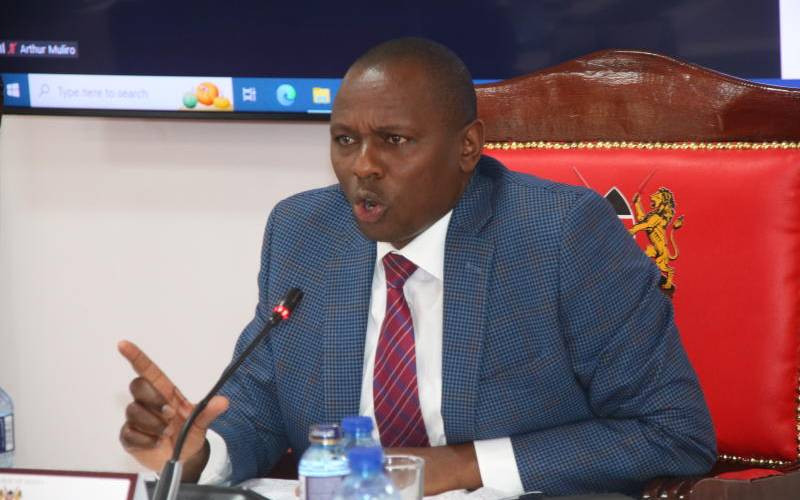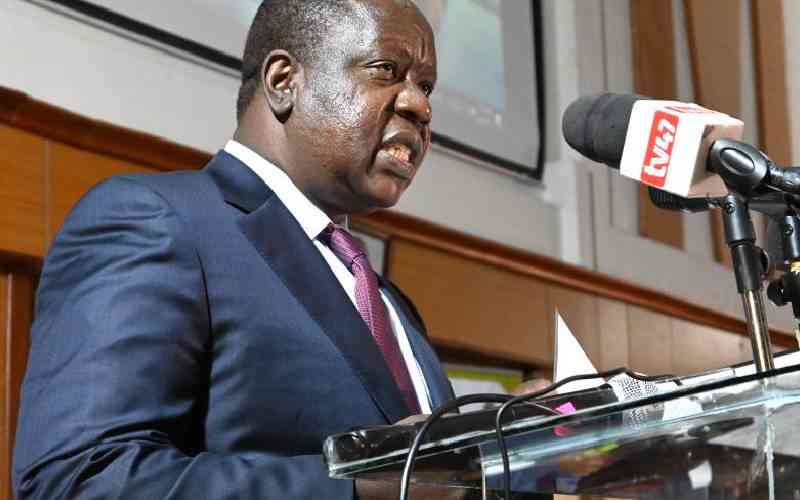By Emmanuel Were and Jevans Nyabiage
Business Beat went in search of some of the members of TNA who helped craft President Uhuru Kenyatta’s campaign but remained unknown. Some have started their own businesses, others have opted to stay in the civil service. For those in business, the work they did for the President has opened so many doors, that in some cases, they have to turn away clients. These are their stories:
DANIEL MUGO, 26: Designer Designate — The man behind the TNA and Kenya @50 logos
At the age of 13, while in Standard 6, Daniel Mugo designed a magazine by picking random images and using a collection of short stories.
The magazine was just distributed within the Mugo household, but for young Daniel, it marked the start of his journey. He used basic Windows software — Paint — to create the magazine. Over the years, he built on this passion for design by doing work for the church he attends, Oasis of Love, in Umoja.
After high school at Nairobi’s Upper Hill, he joined the Andrew Crawford Media Training School to study video editing. Thereafter, he went to Daystar University to study advertising.
Mr Mugo got his first taste of campaigning at Daystar. He helped design posters and banners for friends vying for student leader positions. He participated in three campaigns, and all his clients were successful, he says.
But advertising was not his cup of tea, so he took a break when he was in his fourth year at Daystar in 2010.
Breakthrough into Team Uhuru
In 2010, during his study break, a friend introduced Mugo to Mr Johnson Sakaja – The National Alliance Party of Kenya’s national chairman. He was interviewed and picked as a video editor. Mr Sakaja was then building the foundations of Team Uhuru by slowly putting a team together.
When Mugo joined in 2010, there was not much video editing work, so he focused on design work.
TNA designs and logos
Mugo has left his mark in Kenyan history with two designs. The first was the TNA logo, and the second, the Kenya @50 logo that is being used to mark the country’s 50 years of independence.
“Ninety-eight per cent of the design work done by TNA was my handiwork,” Mugo says.
He also did design work and branding for other member parties of the Jubilee coalition.
Stay informed. Subscribe to our newsletter
What you might not know
About the logos
After going through several designs, TNA had settled on an eagle for its logo. But after a weekend of debate, the eagle was ditched in favour of a dove.
“The eagle was shot down because in most Kenyan villages, the bird is perceived negatively because of its swooping theft of chicks,” Mugo says.
The Kenya @50 logo also went through about 15 drafts before the final one was accepted.
Team Uhuru had started designs of the logo a few months before the elections, an indication of the level of confidence they had of victory.
“The lion on the logo symbolises Kenya’s place in the region; we are the top dog.”
When the logo was first unveiled, it received a lot of negative reviews, especially on social media.
“But I challenged those [detractors] to show me better designs. No one did. There were all sorts of people claiming that they are the ones who did that design, but I feel it is now time I came out.”
How elections changed his fortunes
Pay is a sensitive subject, but Mugo estimates that they were paid between Sh300,000 to Sh400,000 per month.
He was able to save about Sh1.5 million from his salary.
That money has helped him start his design business, Numidia Interactive.
His aim is to dominate the interactive media space, with a focus on developing video and computer games that tell the African story.
He also sees an opportunity to develop strategic communications for the Government.
“It should not just be design for the sake of designing but for a bigger purpose. I want to set new standards as to how the Government does design.”
His work with Team Uhuru has opened other doors.
“I have won every single pitch I have made because of my portfolio. People have high expectations when they hear I did the designs for the TNA and Kenya@50 logos.
“Being involved in the campaign and building such a portfolio has made things easier. It is not about the degree or the papers, it is about the portfolio.”
Mugo says he is chasing four major deals this year, though he cannot disclose them because he has signed non-disclosure agreements.
He still maintains President Kenyatta as a client.
Words of wisdom
“People define jobs based on their incomes. That should not be the index; it should be how much satisfaction they get from the job.”
Memorable moments
“The launch of the TNA manifesto and the TNA launch [in May 2012]. Then there was that final rally at Uhuru Park in Nairobi before the election. People were dressed in more red than on Valentine’s Day. I went to the rooftop of KICC, sat and just watched; I was feeling a bit intoxicated.”
He’s proud to see people putting on his designs on their T-shirts, caps and shukas.
Future plans
Mugo’s parents were worried when he dropped out of Daystar, but they were encouraged by his work in the campaigns. He plans to go back to university to study community development, and follow it up with a master’s in international development.
MARVIN TUMBO, 30: Digital Director, Uhuru Kenyatta campaign; CEO Socialight Media and IT Director Utawala Africa

Mr Marvin Tumbo was called to do a BSc in education at Egerton University, but he turned that down for a BA in economics and sociology at the same university. He graduated in 2009.
He read widely while in campus, and engaged his lecturers in intense debates on matters he had a differing opinion on. Whenever he felt strongly about what he thought, he put it down on his blog, and this opened a huge opportunity for him.
Amnesty International took notice of Mr Tumbo’s blog when he was writing about international humanitarian law, a unit he was studying in sociology. The organisation invited him to blog for them.
One day, during an Amnesty International conference call in 2009, Tumbo was chatting with a Mr Ryan Visser based in the UK. Mr Visser introduced Tumbo to the idea that social media could be a business.
He took three months to research this, taught himself coding skills and then launched his company in late 2009.
Breakthrough into Team Uhuru:
Tumbo became a speaker at local events hosted by the Kenya ICT Board, tackling local content and social media. In 2010, a PR firm approached him to help them with a pitch they were making to TNA’s Sakaja. The party chairman, however, ended up calling Tumbo directly because he liked his social media strategy. He became part of the team that would end up being Team Uhuru.
TNA’s social media strategy
Tumbo explains what the party’s social media strategy was like this:
“Suppose you have a high quality bag you want to market to people on social media. You would have to build a profile of which person on social media you would want to target with the advert. If it is a niche, high-quality bag, then you would want to target young people who are employed because they would want to look good and have the money to spend. It is the same way banks use customer data based on age profiles and spending habits to market products.”
Team Uhuru used the data social media platforms collect to profile Kenyans and run targeted campaigns.
For example, adverts that painted Mr Kenyatta as a youthful president ready to solve issues such as unemployment were targeted towards youthful Kenyans on Facebook.
Campaign adverts that targeted the older generation and spoke about the need for continued stability in the country targeted the older generation on social media.
“We never really guessed. Everything we did was systematic. We had a versatile team and our focus was on mobilising the young people. We also knew that reaching a person who is online in a rural area would be important because whoever is online in the rural area is likely to be an influencer,” Tumbo says.
“Politically, no one had used social media to the level we did during the Uhuru Kenyatta campaigns.”
How elections changed his fortunes
Socialight Media, Tumbo’s company, was formed in 2009, when he finished campus.
“I had always known I wanted to start my own company.”
He met some of his first clients through AISEC, an international organisation that empowers youth; he was vice president of the Egerton chapter.
Socialight Media helps companies develop their social media marketing strategies and build a profile on these platforms.
Business has been good, Tumbo says, as his firm has got more referrals from the work it did for the President. It has also grown to employ 10 staff.
“Now I can say no to business,” he says.
Tumbo has also taken on the role of IT director at Utawala Africa, an initiative of Strathmore University to help governors across Kenya manage their counties better by using information on schools, hospitals and other facilities.
Memorable moments
The TNA party launch was out of this world, Tumbo says.
“The TNA launch was the first visual manifestation of the work that we had been doing.”
Another key highlight was that they used much less on the launch than the Sh200 million that was being thrown around in the public domain.
“It was close to a 10th of that,” he said. “We ran a very frugal campaign, and both online and offline budgets had to be fiercely defended.
“The team was mostly composed of young guys who had passion, wanted to build a reputation and it was not just a matter of making money.”
Future plans
Tumbo hopes to write a book on social media and politics.
PATRICK NGATIA, 37: TNA’s field director in charge of political networks at the grassroots; Director of Liaison in the Office of the Senior Advisor, Political Affairs, or “President Uhuru’s Messenger”

Student politics gave Mr Patrick Ngatia his start in electioneering. For two years, between 1998 and 2000, he was the Students Organisation of Nairobi University (SONU) Chiromo campus representative.
Mr Ngatia studied botany and zoology for his bachelor’s, though it was not his first degree choice. He had wanted to be a lawyer but did not get qualify because of one of his grades. He followed the degree with a master’s in environmental planning and management at the University of Nairobi.
Soon after university, he joined the National Rainbow Coalition (Narc) as a secretary of the National Youth Congress ahead of the 2002 elections. The party’s presidential candidate, Mr Mwai Kibaki, won the election by a landslide.
Mr Ngatia’s time in Narc saw him rub shoulders and schmooze with those in power, and get to know the inner workings of the political machine.
In the 2007 elections, he rose to the position of director of youth campaigns for then President Kibaki.
Ngatia founded Vijana na Kibaki, with Sakaja working under him during the 2007 campaign.
Breakthrough into Team Uhuru
Four years later, in 2011, with Sakaja driving the Team Uhuru initiative, there was a vacancy for someone to handle the mobilisation of the youth. Sakaja gave Ngatia a call, and the rest is history.
Political grassroots networks
“Creating a political network is like mathematics, you move from the known to the unknown,” Ngatia says.
Team Uhuru started off with a network of agents that were known to them, especially in their stronghold of Central Province, and then later on Rift Valley after the coalition with Mr William Ruto’s URP.
Ngatia’s role was to oversee the recruitment of agents and push them to ensure they delivered results at the grassroots level through door-to-door campaigns and getting people to show up for rallies.
“Around every polling station, we had about 20 co-ordinators, and most of them were helping in mobilising people. So, for example, if we needed 150,000 people to show up at a rally at Uhuru Park, each of the 81 wards in Nairobi was tasked with bringing in 2,000 people.
“We announced rallies through radio, television, door-to-door campaigns and trucks going around Nairobi.”
However, not all agents turned out to be honest.
“There were situations where some people were just stealing money; they were basically a minus for our campaigns. With time, we had to do what we call ‘repairing networks’.
“You must also have some intelligence to ensure the agents are not moles who will give away your strategy.”
Were people paid to fill rallies?
“There are organised youth groups who wanted to come but did not have the means to; those ones got transport. But you cannot pay 150,000 people to come for a rally. The money we spent was mostly for hiring sound systems, paying musicians and other running expenses.
“There are some people who came because they wanted to listen to musicians or listen to Uhuru.”
Money and power
“It has only been one year and it is very interesting working for the President. I’m the Director in charge of Liaison. My work is to liaise between the President and others such as civil society, politicians, and business people who want to see the President.
“The President wants to maintain relations with political parties, NGOs, churches, so he wants to know what is happening all the time. So I would say I’m the President’s messenger, which is not a bad thing.
“Working for Government is not necessarily lucrative in terms of finances, but you have influence. Your phone calls are now taken more seriously.”
Insights into the President
“He is a very good President. He talks to his people, he calls people. He can pick his phone and call someone in Kisii, some old mzee he met a while back.
“He does not have a sense of day and night — sometimes he will call you at 2am wanting to find out, for example, what the papers are saying.”
Memorable moments
“In every campaign, there are people waiting for you to fail. It is usually pandemonium on the morning of a political rally. You are being called and told: ‘Ngatia, I’m watching TV and not seeing people. We have spent so much money on this event, and you are going to embarrass us if you don’t fill the place’.”
He says the greatest feeling was filling a venue, and putting people’s doubts to rest.
[email protected]
 The Standard Group Plc is a
multi-media organization with investments in media platforms spanning newspaper
print operations, television, radio broadcasting, digital and online services. The
Standard Group is recognized as a leading multi-media house in Kenya with a key
influence in matters of national and international interest.
The Standard Group Plc is a
multi-media organization with investments in media platforms spanning newspaper
print operations, television, radio broadcasting, digital and online services. The
Standard Group is recognized as a leading multi-media house in Kenya with a key
influence in matters of national and international interest.
 The Standard Group Plc is a
multi-media organization with investments in media platforms spanning newspaper
print operations, television, radio broadcasting, digital and online services. The
Standard Group is recognized as a leading multi-media house in Kenya with a key
influence in matters of national and international interest.
The Standard Group Plc is a
multi-media organization with investments in media platforms spanning newspaper
print operations, television, radio broadcasting, digital and online services. The
Standard Group is recognized as a leading multi-media house in Kenya with a key
influence in matters of national and international interest.


